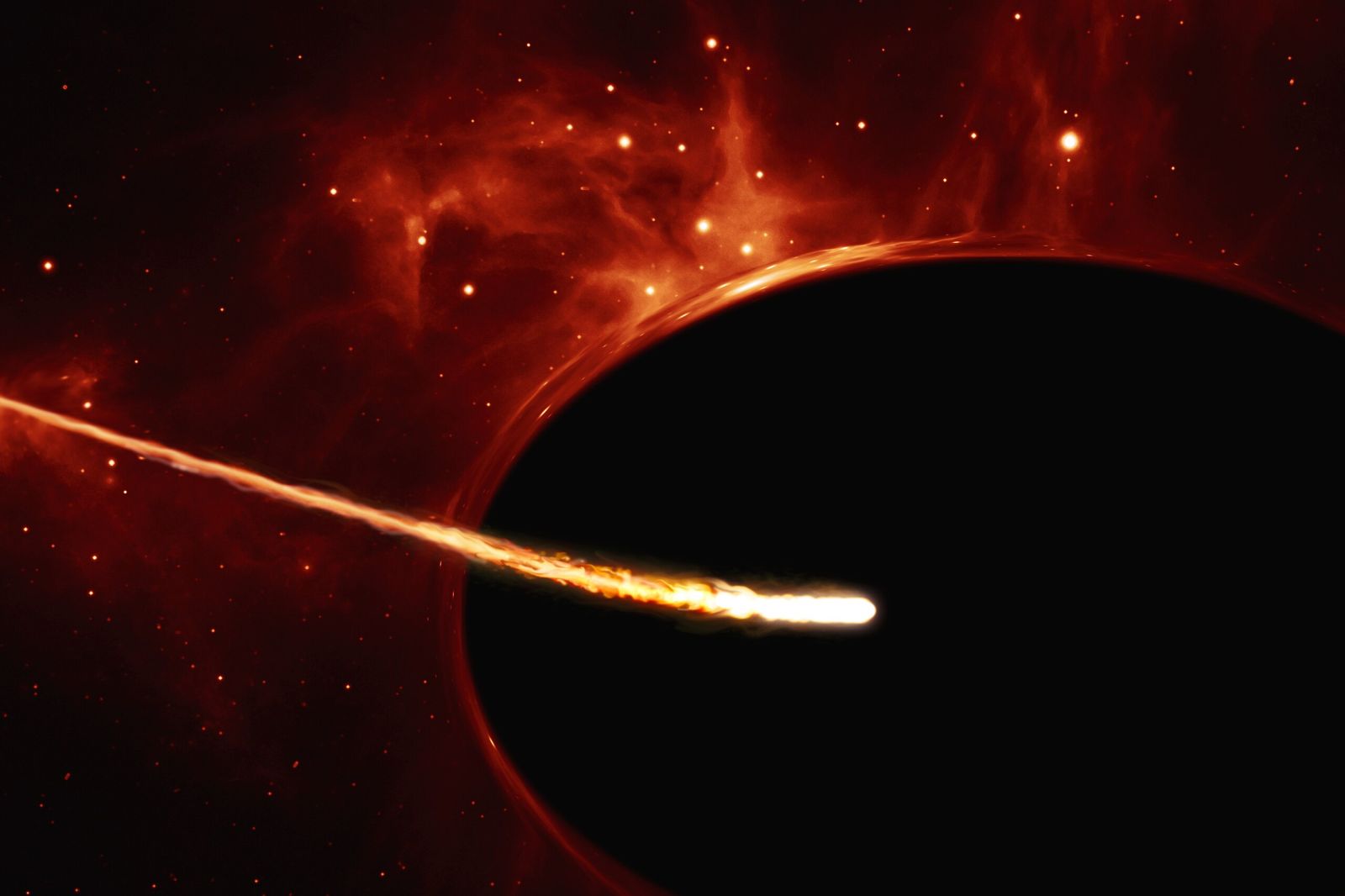Follow us on Google News (click on ☆)
Supermassive black holes are born from successive mergers of smaller black holes, each contributing its angular momentum, which accelerates the rotation of the resultant black hole. Measuring the rotation of supermassive black holes provides clues about their history. Recent research proposes a new method to infer this rotation based on the black holes' effects on space-time.
The star in question was ripped apart by a supermassive black hole during a tidal disruption event (TDE). These events occur when a star ventures too close to the gravitational influence of a black hole. The tidal forces generated squash the star horizontally and stretch it vertically, a process known as "spaghettification," which transforms the star into a strand of stellar matter.
Some of this matter is ejected while the rest forms an accretion disk around the black hole. This disk heats up due to frictional forces, emitting intense light and gradually feeding the black hole.
When supermassive black holes spin, they drag the surrounding space-time with them. This effect, called "frame-dragging" or the Lense-Thirring effect, causes a temporary "wobble" in the newly formed accretion disk around the black hole. A team of researchers discovered that this wobble can be used to measure the rotational speed of the central black hole.
To study TDEs and the frame-dragging effect, the team searched for five years for bright and nearby examples of stars being ripped apart by black holes. In February 2020, they detected AT2020ocn, a bright flash from a galaxy about a billion light-years away. AT2020ocn was spotted by the Zwicky Transient Facility in optical light, revealing a TDE involving a supermassive black hole with a mass between 1 and 10 million times that of the Sun.
The X-ray emission from the precessing, or "wobbling," accretion disk was detected using NASA's NICER telescope, located on the International Space Station (ISS). NICER monitored the event for several months, revealing that the X-ray brightness and temperature modulated over a period of 15 days. After three months, these oscillations ceased, aligning the disk with the black hole due to gravity.
The research also revealed a surprise: the black hole was not spinning as fast as expected, at less than 25% of the speed of light. According to Pasham, the Vera C. Rubin Observatory, under construction in Chile, could detect thousands of TDEs over the next decade, providing opportunities to measure Lense-Thirring precession and understand the evolution of supermassive black holes.
The team's study was published in Nature on May 22.
